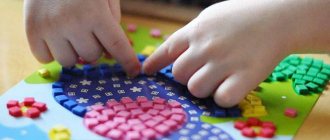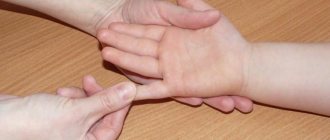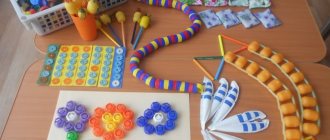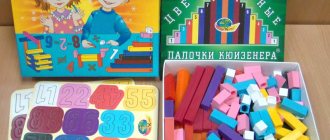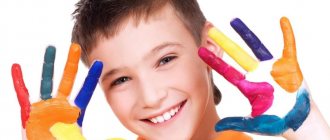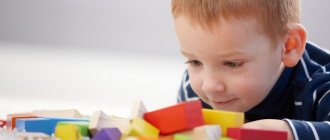The maturation and growth of children is a very peculiar process, which is distinguished by many subtleties and nuances. And every person who is a parent must certainly take a direct part in the development of his child. And this means not only, as they say, teaching the mind, sending it to kindergarten and school, as well as providing the child with everything necessary for a normal life, but also more subtle actions. One of these is the development of fine motor skills.
What are fine motor skills?
Fine motor skills are the ability to coordinate the movements of the small muscles of the wrist, palms, fingers, and even toes. General motor skills are the ability to coordinate the movements of large muscles of the arms, legs and feet, as well as the ability to control the entire body. How to develop hand motor skills in a child? To do this, you can perform special exercises with him and play age-appropriate games. Even the simplest exercises, such as moving a toy brick or picking up a piece of food from a plate, prepare your baby for more complex tasks, such as writing or buttoning up buttons. It must be remembered that a child’s development can proceed in different ways, and everyone develops at their own pace. Compared to other children, your baby's development of fine and gross motor skills may be either advanced or delayed, and this is normal.
Modeling from clay, plasticine or salt dough
Today it is a well-known fact that working with such “materials” as clay, plasticine and salt dough perfectly develops fine motor skills and also has a wonderful effect on the imagination.
What you can do:
- Cover glass bottles with plasticine and shape them into teapots, vases, jugs, etc.
- Lay out specific designs from plasticine in the form of balls, sausages on cardboard or plywood
- Make impressions on clay, dough or plasticine by pressing on them with fingers, toys, coins, buttons, etc.
- Make balls, rings, sausages, then cut into separate pieces, and then put them together again (you can shape individual pieces)
- Make several different parts and put them together into a composition (you can prepare the elements yourself, and after that give them to the child to work with)
Fine motor skills in children from 1 to 3 months
At the age of up to 1 month, in accordance with the norms of child development, the baby’s hands are usually clenched into fists, and the fingers clasp the thumb. If you put a rattle in his hand, he can grab it, and that's all for now. If you run your finger across your baby's palm, he will grab it tightly. However, you should not try to lift it - the child may suddenly let go of the finger. This is just one of many infant reflexes that a child has from birth - the palmar grasp reflex, and the baby has no control over it. At about 3 months of age, the baby's arms begin to relax. The palm is in a half-open position most of the time. Now, if you put a rattle in his hand, he can grab it, bring it to his mouth, or drop it when he stops being interested.
How to develop hand motor skills in a child from 1 to 3 months
During this period, the following actions are recommended for the development of the child:
- Shake a toy in front of him or over his head. The child will reach for it or pat it with his hand.
- Give your child bright objects, if possible in different sizes, shapes and textures.
Summarize
| At this stage, the child develops the following elements of hand motor skills: ● He can squeeze and unclench his palm. ● He brings his hands to his mouth. ● He can hold a toy like a rattle and shake it. |
Fun exercises for older kids
Even simple exercises may have their contraindications depending on the developmental characteristics and health status of the baby. Therefore, before performing such exercises, it is necessary to consult with the pediatrician who is observing the baby. For example, diseases of the cardiovascular system may be a contraindication to active games and running. Allergic diseases require caution when using solutions for soap bubbles and playing with pillows (due to house dust); diseases of the musculoskeletal system limit riding a scooter or bicycle.
Catching up with soap bubbles
This game is suitable for kids who already walk and run confidently. On a walk or at home, blow soap bubbles and invite your baby to pop them with his palms.
It is impossible to predict the flight path of a soap bubble - that is why, trying to catch up with it, the baby will quickly change his movements, jump or, conversely, dodge.
Obstacle course
For this exercise we will need a balance bike, tricycle or scooter. Make obstacles out of plastic cones and invite your child to go around them. Another option for the exercise: draw a white line on the asphalt and ask your child to drive along it as smoothly as possible.
Aerialist
This is a home version of the chalk line exercise. Just place masking tape on the floor and let your little one walk across it with his arms outstretched. In addition, you can come up with a gaming legend. For example, that the ribbon is stretched high, high above the clouds, and the peaks of snow-white mountains are hidden under the legs.
Fine motor skills in children from 4 to 7 months
At 4 months, in accordance with the norms of child development, the baby usually holds the rattle tightly, can shake it, put it in his mouth and even transfer it from hand to hand. At the age of 4 to 7 months, the child uses his palms as claws or a rake, that is, he lifts objects of interest to him with a raking motion. The baby can also grab an object with one hand, transfer it to the other, and make a rotational movement of the wrist towards himself in order to examine the thing.
How to develop hand motor skills in a child from 4 to 7 months
What can be done for the development of a child at this age:
- Place toys at some distance from the baby so that he has an incentive to reach for them.
- Let him play with blocks and stuffed animals to develop his hand-eye coordination.
Summarize
| So, a baby between the ages of 4 and 7 months usually develops the following elements of hand motor skills: ● He can reach for objects with one hand. ● He transfers objects from one hand to another. ● He can lift objects using a raking motion with his palm. |
Fine motor skills in children from 8 to 12 months
From 8 months to 1 year, the child’s general motor skills rapidly develop: as a rule, he can already crawl, stand up independently, and sometimes even walk. But hand motor skills are not far behind, you just need to take a closer look. At this stage, in accordance with the norms of child development, the baby switches from a raking movement to clamping an object between the thumb and index or middle finger. This way he is able to lift even small objects the size of a corn ring or a breakfast ball. You can even show him how to snap his fingers, and sometimes the child is even able to repeat it! Don't be surprised if your baby starts throwing things at this age. He'll be so excited about his new, improved hand coordination that he'll enjoy picking up objects and throwing them, hoping you'll pick them up and give them to him. With these actions, the child learns to understand the relationship between cause and effect, and also tries to attract your attention. If he starts throwing toys, encourage him to play with soft balls rather than wooden blocks. At this stage, it is best to remove all fragile objects from your baby, otherwise he may throw a salt shaker or your phone on the floor. For his and your safety, we recommend temporarily switching to plastic utensils. By the way, as part of measures to ensure the safety of your child’s home, remove fragile decorative elements, such as vases, away.
How to develop hand motor skills in a child from 8 to 12 months
For the development of a child at this age, it is useful to play joint games aimed at coordinating hands and fingers. Here are some examples:
- Sit on the floor next to your baby and take a large ball (and if the ball rings or rattles, it will be even more interesting for the baby). Roll the ball towards the child. Let him roll it towards you too. At first, the baby will simply clap the ball, but over time he will learn to roll it purposefully.
- Give your baby something that opens and closes, such as a box with a lid. You can hide your baby’s favorite toy in the box and say “peek-a-boo” when he lifts the lid.
- Give your child a basket with different items: soft toys, balls, safe household items like wooden spoons and cups. Let the baby take them one at a time from the basket and put them back. At this time, you can tell your child the name of each object, what its shape, texture and color are.
- At this age, children love latches, wheels, levers, hinges - in general, anything that can move. Try to choose toys for him with these properties.
Summarize
| A child aged 8 to 12 months develops the following elements of hand and finger motor skills: ● He can grasp objects by holding them between the thumb and forefinger, shake them, hit them, transfer them from hand to hand, release them arbitrarily or throw them. ● He can knock objects together to make sounds (like wooden blocks). ● He can build towers from cubes and break them. ● He puts toys and other items in the container and takes them back out. ● He can stick his index finger into the holes. ● He holds the crayon or pencil in his fist and moves it across the surface. |
Assistance
If parents suspect that their child is falling behind their peers, they should consult a specialist. The doctor will prescribe a diagnosis and study the features of the formation of the central nervous system according to the patient’s individual chart. If necessary, corrective measures will be taken.
If you have impaired finger motor skills, please contact the Trust Center for Psychology and Neurology in Krasnogorsk. To diagnose manual praxis disorder, cerebral MRI, visometry, X-ray of the hands, and EEG are performed. Consultation with a neurologist, ophthalmologist, and other specialized specialists is also necessary.
For correction we use a developmental environment, hand massage, exercise therapy, speech therapy massage, articulation gymnastics, as well as sujok therapy. The clinic has created a space that goes beyond the usual format of medical centers. We support patients, trying not only to improve their health, but also to provide all possible support in difficult situations.
Fine motor skills in children aged 1 year
Congratulations! Your baby is one year old! At this age, the child’s development is progressing by leaps and bounds, and he can already do a lot of things. Parents are usually impressed by gross motor skills, particularly the long-awaited first steps, but there is also something to be surprised about in the area of fine motor skills. Thanks to improved gross motor skills, the child is increasingly eager to explore the world around him. In the process, fine motor skills are also improved. The baby still cannot grasp the smallest objects, but this achievement is not far off. While your child enjoys exploring and playing with larger objects, such as wooden blocks and wooden puzzles. At this stage, significant progress occurs in the development of hand-eye coordination. Nowadays, the child increasingly uses one hand, but this does not mean that his leading hand has already been determined (that is, he will be left-handed or right-handed).
How to develop hand motor skills in a child aged 1 year
As your child gets older, you can do the following exercises to develop hand motor skills:
- Show your child how to fold paper. You can make an accordion fan or a paper airplane with it.
- Have your child insert different shaped blocks or pegs (square, rectangular, triangular) into the corresponding holes.
- Show him how to stack the blocks on top of each other to make a tower.
- Offer him toys that can be taken apart and put together safely, such as a set of cups that nest inside each other.
- Invite him to sculpt something from plasticine.
- Entrust him with simple housework, such as sweeping, arranging items, or helping you prepare food (stirring pancake batter or putting vegetables in a pan).
- Play together outside, for example, you can throw a ball to each other.
Summarize
| Between the ages of 1 and 2 years, a child develops the following skills and abilities: ● He can build a tower from blocks and immediately break it. ● He plays with boxes, containers and their lids. ● He can lift a moving object, such as a ball. ● He leafs through books. ● He turns the door handles. ● It knows how to insert pins into the corresponding holes. ● He draws with pencils or fingers. ● He knows how to drink from a mug. ● He can feed himself with a spoon (with varying degrees of success). |
Fine motor skills in children aged 2 years
Sometimes this period in children's development is called the “two-year crisis.” And although it can be difficult for parents of two-year-olds, try to focus on the good - that your baby continues to grow and develop.
Fine motor skills of the hands and fingers continue to improve. The baby is now able to pick up small objects the size of a pea and perform actions that require complex coordination, such as opening a jar.
How to develop hand motor skills in a child aged 2 years
During this period, the child develops the ability to focus attention. Now he can immerse himself in creative endeavors for a short time. Here are some of the things you can get involved in:
- Read books out loud to your child and let him turn the pages.
- Invite him to draw with crayons, colored pencils or fingers using special paints.
- Play with blocks or construction toys with him.
Summarize
| Between the ages of 2 and 3 years, a child develops the following skills: ● He can leaf through the pages of a book or magazine. ● He builds towers with at least six bricks. ● He knows how to take off his shoes. ● He knows how to unbutton a jacket. ● When potty training, he can take off and put on panties on his own. ● He can turn doorknobs. ● It opens and closes jars with screw caps. ● He knows how to drink from a mug, holding it with one hand. ● He knows how to unwrap candy. ● He holds the pencil in the correct position and can make strokes in different directions. |
Fine motor skills in children aged 3 years
At this stage of development, children already control their muscles much better. For example, at this age a child can move his fingers both individually and all together. This is noticeable in the way he holds a pencil or crayon - now it looks more like how an adult would do it. At this age, the child begins to pay more attention to what surrounds him, in particular objects. For example, during play he arranges toys in a special way. He can use various tools and devices similar to adults, for example, he cuts out shapes from paper with children's scissors. He is getting better at making things from scrap materials. Some children at this stage enjoy experimenting with art materials.
How to develop hand motor skills in a child aged 3 years
Here are some examples of useful and interesting activities that contribute to a child’s development:
- Make buildings from cubes.
- Solve simple puzzles together.
- Play with a board with holes.
- Make a necklace from thread and large beads.
- Color in coloring books with crayons or draw on the pavement with chalk.
- Build sand castles.
- Dress dolls in doll clothes with buttons, zippers and fasteners.
Your child can be assigned simple and safe tasks around the house (with supervision, of course):
- Help adults build a dollhouse, unscrew something with a screwdriver or hammer a nail with a light hammer.
- Help plant flowers in the garden, dig a hole with a shovel, loosen the soil with a rake.
- Beat eggs for omelettes or batter for pancakes with a whisk.
Summarize
| Around the age of 3 to 4 years, a child masters the following skills: ● He can hold a crayon or pencil in his hand like an adult (between the thumb and all the rest). ● Sometimes he manages to hold cutlery in his hand like an adult (between the thumb and all the rest). ● He eats on his own and rarely spills anything on the table or on himself. ● He builds a tower of at least nine cubes in height using cubes. ● He knows how to pour drinks from a jug into his mug. ● He independently buttons and unfastens the buttons on his clothes. ● He uses baby scissors to cut out geometric shapes from paper. ● He sculpts various figures from plasticine. |
Exercises using additional objects
In addition to the fact that exercises using additional objects are very exciting and entertaining, they excellently contribute to the development of spatial imagination.
Among these games are:
- Mosaic. To begin with, it is enough that the baby simply inserts mosaic elements into the base. Subsequently, you should specify a specific image or shape for the child to post it. The ideal option would be a mosaic with different hats.
- Abacus. Give your child the task of moving the counting rings from one end to the other. To develop counting skills, you can also move the rings in order.
- Threads. This refers to the usual winding and unwinding of threads on various objects. You can, for example, select figures of some animals in advance, and the child will wrap them with threads, giving them color. These same figures can be used for games.
- Paper clips. To play this game, you will need regular colored paper clips and several sheets of colored paper. The task is to collect leaves of the same color into a small bundle, and then fasten them with the same paper clip.
- Bolts and nuts. Nothing fancy is required - just large bolts and nuts. And the point of the game is even simpler - screw the nuts onto the bolts.
- Clothespins. Take clothespins and attach them to rope, cardboard or any other base. The task can also be complicated: some identification marks are glued onto the base and clothespins, for example, colored cards or letters, and the child attaches the clothespins to the corresponding bases.
In fact, this list of games for developing fine motor skills is not exhaustive. For this purpose, you can find some other games or come up with your own. Remember that anything is suitable for developing motor skills: water, sand, laces, wire, paper, etc. and so on.
And one more thing: developing fine motor skills is useful not only for children, but also for adults, so even if you don’t have children, go to the store for plasticine, and we assure you, the evening will be usefully spent.
We also recommend reading:
- Storytelling
- Piaget's theory of cognitive development
- Dyslexia: Definition, Causes, Symptoms and Treatment
- How to get your child interested in reading?
- How to teach a child to write beautifully
- How to teach a child to read: rules, tips and tricks
- Masaru Ibuka “After three it’s too late” - summary
- A person's main limiting belief
- A selection of courses for children and parents
- Speech thinking in children and adults: what is it and why is it needed?
- Top 5 most important soft skills for every child
Key words:1Children
Fine motor skills in children aged 4 years
A child at 4 years old is already quite big, and the development of hand motor skills is almost complete.
How to develop hand motor skills in a child aged 4 years
Around this time, the child begins to be interested in artistic creativity, complex games and other activities that require manual dexterity. For example, he may be interested in the following activities:
- Draw full-length human figures with arms, legs and face.
- Write block and capital letters.
- Draw, trace and sketch geometric shapes.
- Draw with paint and fingers.
- Sculpt figures from plasticine.
- Cut out complex shapes from paper using children's scissors.
- Play with blocks and use them to build tall or massive structures, such as a tower or fortress.
- Play cards or board games.
Summarize
| At the age of 4 years, a child usually develops the following skills: ● He knows how to brush his teeth independently under the guidance of his mother. ● He dresses independently with virtually no help from his mother. ● He knows how to tie his shoelaces. ● He has no problem using cutlery, even a knife. ● He goes to the toilet on his own and takes care of himself. |

